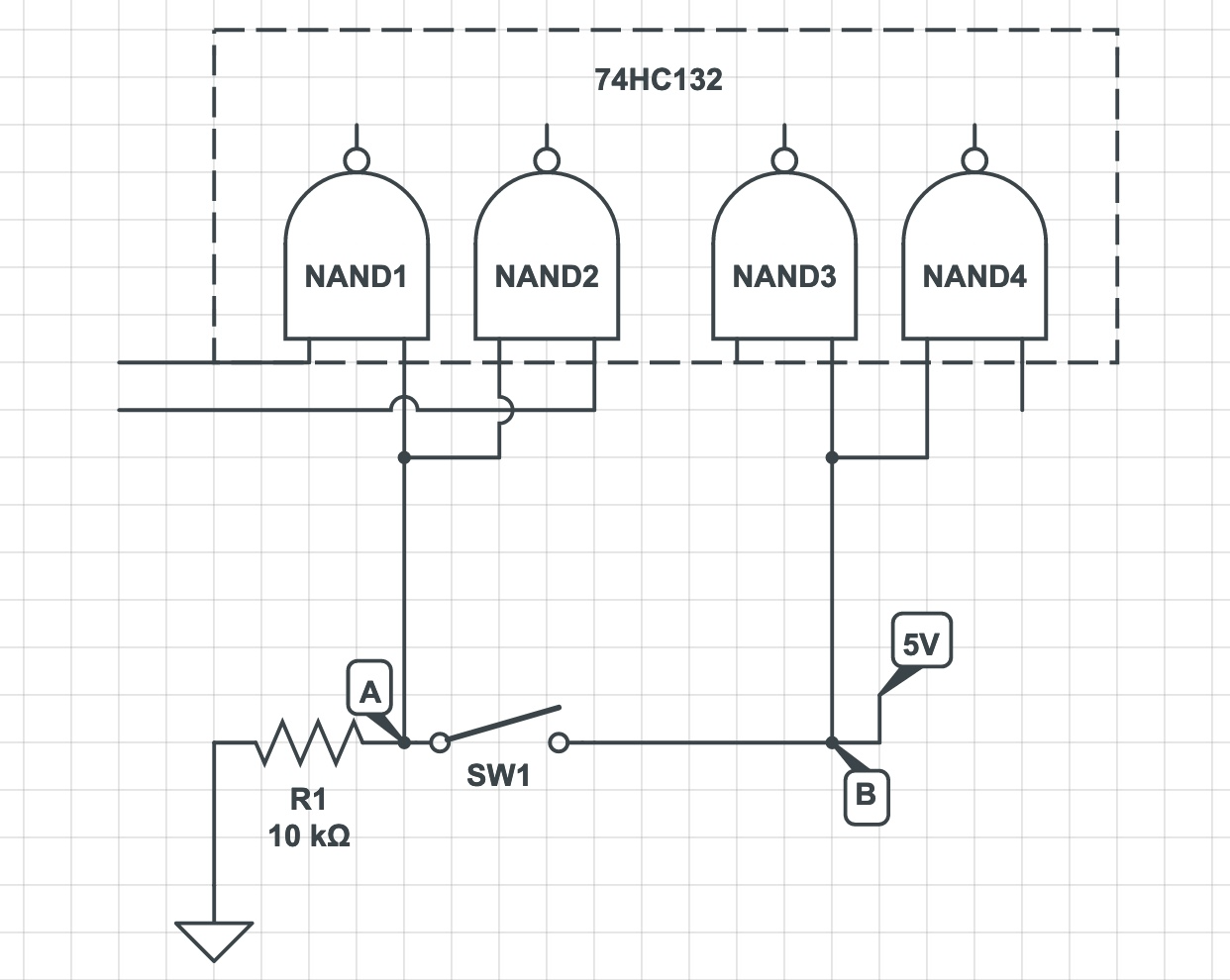I need to supply logic 1 or 0 (selected by a DIP switch) to NAND gates. Input 'A' & 'B' are inverted to each other. My Question: 1: Is the below circuit okay or its better to use inverter IC on A to supply B?
2: Is there any difference in using pull-up vs pull-down resistor in this case?
3: what can the max R1 value be? I want to have minimal current draw (when the switch is ON for logic '1') through the pull down resistor.So I should use the highest resistor value ?I know R1 is determined by the type of NAND chip (CMOS /TTL), so next question which chip should I use? My application will have regulated 5V supply and won't be >1KHz operating freq.Just need low power consumption. Is the selected 74HC132 okay?
Sorry for the basic question but I am just trying to understand the basics to actually implement my design from proteus simulator to PCB.

EDIT: just found out that Input 'B' will always have 5 V. So I will need another DIP swicth-pulldown resistor combo OR invert 'A' to supply 'B'.

Bis always high in your diagram ... the switch has no effect on its voltage level \$\endgroup\$